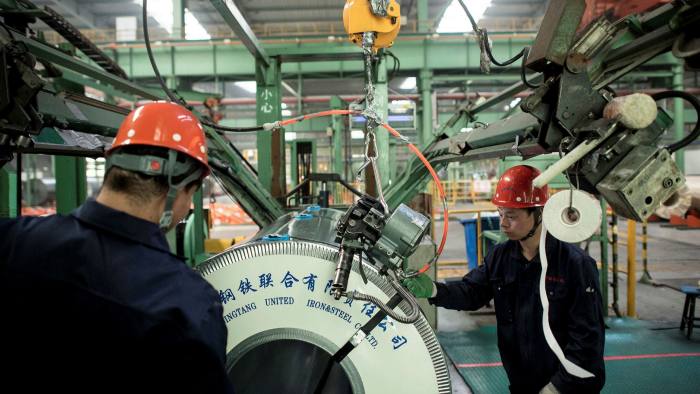Financial Times | Thomas Hale in Hong Kong and Christian Shepherd in Beijing APRIL 12 2021
Covid has frustrated Beijing’s plans to redirect economy towards greener sources of growth

With pollution hovering around a “very unhealthy” level in Beijing, China’s environment minister made a surprise visit to the heart of the country’s steel industry. When Huang Runqiu arrived at the industrial city of Tangshan, about 150km east of the Chinese capital, he scolded four steel mills for what he deemed to be “faked” production records to dodge emissions targets. The unusual intervention last month signalled the rising power of China’s environment ministry following commitments to reduce carbon emissions and greater efforts to rein in one of the country’s most polluting sectors. But the battle to control steel production also reflected how the government’s response to the coronavirus pandemic has undermined its plans to wean its economy away from heavy industry and towards less-carbon intensive sources of growth. As with many parts of the Chinese economy, steel production has been running hot as part of a supply-side boom that over the past 12 months has helped counter the early hit from the crisis. That has contributed to the country’s carbon emissions rising compared with 2019, in contrast to other big economies, according to data from the International Energy Agency. “The coronavirus crisis just made things more pronounced,” said Lauri Myllyvirta, an analyst at the Center for Research on Energy and Clean Air. “You had a sharp fall in household consumption and services . . . and the government responded to that with even more construction stimulus. That really meant an even bigger setback to their efforts to change the economic structure.”
In 2020, steel production in China rose 6 per cent to hit 1.1bn tonnes, its highest-ever level, while construction activity also leapt. Production had increased in 2019, when the government encouraged more infrastructure spending as growth slowed. In Tangshan, the city government in March instructed most mills to cut production 30 per cent until the end of the year and told seven steelmakers to keep output at half capacity until July. This month, it introduced rules requiring companies to either renovate or stop using older and more polluting blast furnaces. It also set a deadline of June to demonstrate reductions or face fines. To underscore the message, the environmental bureau handed out Rmb1.92bn ($293m) in penalties to 48 local companies in three days. Zhang Gujiang, Tangshan’s party chief, told steelmakers that meeting environmental targets was a matter of survival. “There will be no way out for companies that do not thoroughly rectify their environmental issues,” he said, according to state media reports. One person working in the industry said while few could predict the exact direction of policy, everyone was afraid of further measures. Despite the fines and warnings, reducing steel capacity could prove challenging, especially as older and idle units are replaced with more efficient technology. “There has been a lot of investment going to that sector and certainly a lot of that has meant more capacity coming online in the big steel producers,” said Myllyvirta. “There is still a problem with smaller unregulated players that are just outside of the capacity control system”.
While steel supply is difficult to control, China faces a comparable challenge on the demand side. Paul Bartholomew, lead analyst for metals at S&P Global Platts, suggested that one reason for high steel production last year was a “huge loosening of credit conditions”, which the government is working to reverse. That also fed into a construction frenzy, boosting demand for the metal and raising the allure of greater profits for producers. “It’s a big challenge, because as soon as you start cutting production, you just see prices soaring,” he said. “In China, when people are making money it’s hard to get on top of things.” The benchmark price of steel in China rose to Rmb5,550 per tonne last week compared with less than Rmb5,000 a month earlier, highlighting the challenge posed by market forces to the government’s ambitions.
